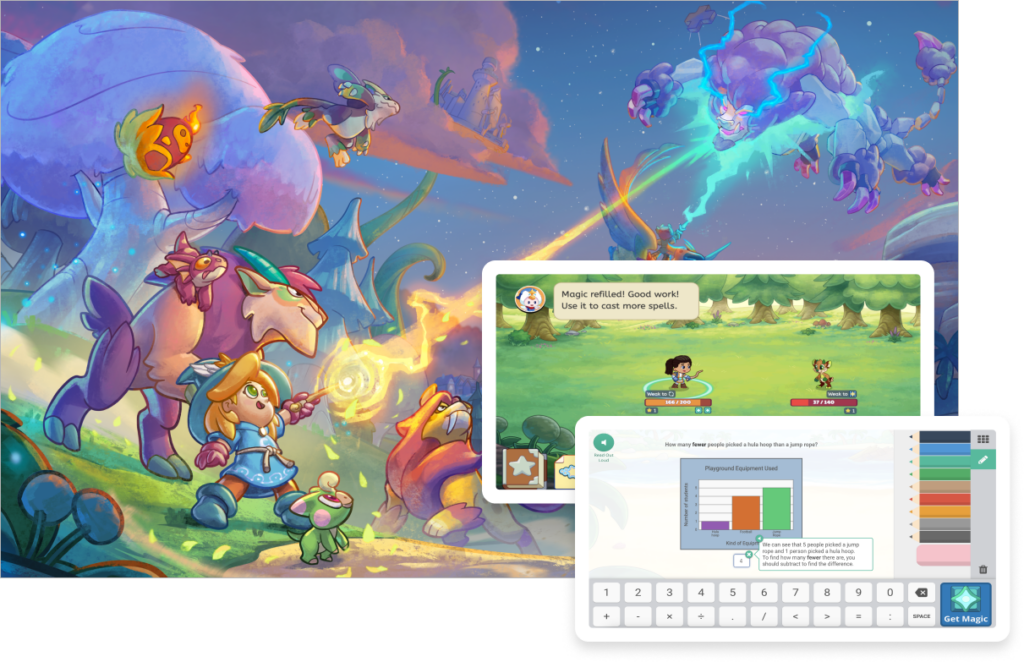As an aspiring teacher, I’m always looking for engaging tools that can make math more enjoyable for students. In class today, I explored Prodigy, a popular math-based game platform that offers a way for students to practice math skills while playing a game. My experience, however, left me with mixed feelings about its educational value versus its entertainment appeal.

When I first logged in, I expected to find a game with lots of math content, possibly puzzles, or problem-solving challenges. Instead, I found myself spending more time on character building, battles, and collecting items than on actual math practice. The math questions that did appear felt secondary to the game itself. While students may enjoy the fun fantasy world, I felt the math wasn’t very deep. It felt more like a computer game with a math component rather than a math tool that happened to be gamified.
That being said, I can still see a place for Prodigy in the classroom. It could serve well as a free-time activity, like something for students to do after finishing their assigned work. It offers a fun, easy way to keep students engaged while still touching on some mathematical concepts. The platform’s motivational elements such as rewards, levels, and storylines can be particularly beneficial for reluctant learners or those who need a positive reintroduction to math.
The Benefits of Gamifying Math
I think that gamification, when done well, can help with student learning in math. Games can make practice feel less like a chore and more like fun. Elements such as immediate feedback, progress tracking, and goal-setting can boost motivation and persistence. For some students, earning badges or levelling up can be far more motivating than a traditional worksheet.
The Pitfalls to Watch Out For
However, not all gamified tools have the right balance between learning and fun. The biggest pitfall is engagement without depth. Students might appear on task but not actually be engaging in meaningful mathematical learning. I think games like Prodigy can sometimes prioritize entertainment over real mathematical understanding. Teachers also need to be mindful of screen time and distraction, ensuring that playing games doesn’t replace authentic problem-solving or hands-on exploration with manipulative. Furthermore, I believe authentic teaching should remain the primary method for introducing new material, with games serving as a supplemental tool rather than the core of the lesson.
Other Tools to Consider
In contrast, I’ve had a much more positive experience with IXL, which offers specific math practice aligned with the BC curriculum. I appreciate that it allows teachers to track student progress by specific learning standards and gives immediate, meaningful feedback. IXL may not be as exciting as a fantasy game like Prodigy, but I believe it’s more valuable because it directly supports what students are learning in class.
Additionally, I found DreamBox to be a good middle ground between fun and learning. It offers structured learning paths that are also interactive and engaging. I only used it for a short time during my trial since it requires an account, but I liked how it balances keeping students interested while helping them build real math skills. However, it seems to be an American program, so it may not align perfectly with the BC curriculum. Still, I think it could be useful, as I found during my trial that most of the content was quite similar.
Final Thoughts
Ultimately, digital tools like Prodigy, IXL and DreamBox, can both play a role in a balanced math program. Prodigy might spark excitement and provide an engaging reward activity, while IXL offers targeted, curriculum-aligned practice for skill development and DreamBox fits in between these two as a good middle ground tool. As teachers, our goal is to use these tools with purpose and ensure that technology supports meaningful learning rather than simply entertaining students.

Sorry, but comments are not enabled on this site.